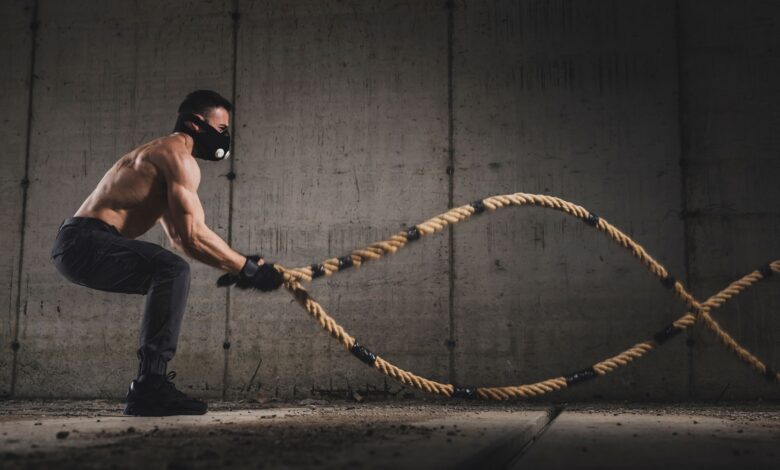
Training Tips: Martial arts require a combination of strength, endurance, agility, and flexibility to execute techniques effectively. Whether you’re a striker, grappler, or practicing traditional forms, strength and conditioning are essential for improving overall performance and preventing injuries. This guide provides specialized workouts targeting the key muscle groups used in various martial arts disciplines, helping you develop power, speed, and stamina.
1. Core Strength: The Foundation of Martial Power
A strong core is crucial for balance, stability, and generating force in strikes, kicks, and grappling movements.
Core Strength Exercises:
- Plank Variations – (Standard, Side Planks, and Dynamic Planks) for core endurance.
- Russian Twists – Improves rotational power for punches and kicks.
- Hanging Leg Raises – Strengthens lower abs, crucial for knee strikes and flexibility.
- Medicine Ball Slams – Builds explosive core strength for powerful strikes.
💡 Tip: Incorporate core workouts 3–4 times a week to maintain strong midsection control.
2. Lower Body Power: Enhancing Kicks, Speed, and Stability
Strong legs are essential for stability, explosive movements, and powerful kicks.
Lower Body Strength Exercises:
- Squats (Bodyweight, Front, and Jump Squats) – Improve lower-body strength and power.
- Lunges (Forward, Reverse, and Side Lunges) – Enhance mobility and balance.
- Box Jumps – Develop explosive power for dynamic footwork and quick movements.
- Calf Raises – Strengthen ankles for balance and agility.
💡 Tip: Train lower body strength 2–3 times a week to maintain endurance and prevent leg fatigue.
3. Upper Body Strength: Increasing Punching and Grappling Power
Martial artists need upper body strength for effective striking, clinching, and grappling control.
Upper Body Strength Exercises:
- Push-ups (Standard, Explosive, and One-arm Variations) – Develop upper-body endurance.
- Pull-ups – Essential for grappling and clinch fighting.
- Medicine Ball Throws – Improve explosive arm and shoulder strength.
- Dumbbell or Kettlebell Shoulder Press – Enhances punching and blocking endurance.
💡 Tip: Focus on functional movements rather than isolated muscle training to develop real-world combat strength.
4. Grip Strength: Essential for Grappling and Control
Strong grips are critical for grappling, holding onto opponents, and controlling weapons.
Grip Strength Exercises:
- Dead Hangs – Improves grip endurance and finger strength.
- Farmer’s Walks – Builds hand, wrist, and forearm endurance.
- Wrist Curls & Reverse Curls – Strengthen wrist control for clinching and gripping.
- Rope Climbing – Full-body engagement with a focus on grip endurance.
💡 Tip: Train grip strength at least twice a week for better control in grappling situations.
5. Cardiovascular Conditioning: Building Endurance for Long Fights
Good cardio conditioning prevents fatigue and ensures you can maintain high performance throughout fights or training sessions.
Cardio Conditioning Workouts:
- High-Intensity Interval Training (HIIT) – Short bursts of high-intensity movements (e.g., sprinting, burpees, jump rope).
- Shadowboxing with Resistance Bands – Improves endurance while simulating fight scenarios.
- Heavy Bag Workouts – Enhances stamina and technique under fatigue.
- Jump Rope – Great for footwork, coordination, and cardiovascular endurance.
💡 Tip: Perform at least 3–4 cardio sessions per week, varying between high-intensity and endurance-focused workouts.
6. Flexibility and Mobility: Preventing Injuries and Enhancing Range of Motion
Flexibility is essential for high kicks, grappling transitions, and injury prevention.
Flexibility & Mobility Exercises:
- Dynamic Stretching – (Leg swings, arm circles) before training to warm up muscles.
- Static Stretching – (Splits, seated hamstring stretch) post-training for better flexibility.
- Yoga or Tai Chi – Improves mobility, relaxation, and injury prevention.
- Foam Rolling – Aids in muscle recovery and reduces soreness.
💡 Tip: Stretch daily and incorporate mobility drills at least 3 times a week for improved flexibility.
Strength and conditioning are vital components of martial arts training. By focusing on core strength, lower and upper body power, grip endurance, cardiovascular conditioning, and flexibility, martial artists can develop a well-rounded physique that enhances their fighting ability.
🔹 Training Smart: Incorporate these exercises into your weekly routine based on your martial arts discipline and training goals.
🔹 Consistency is Key: Gradual progression in strength and endurance ensures long-term success.
🔹 Recovery Matters: Rest, hydration, and proper nutrition play a crucial role in maximizing the benefits of your workouts.
By implementing these specialized workouts, you’ll build the power, endurance, and resilience needed to excel in your martial arts journey.
Stay strong, stay conditioned, and keep training!



